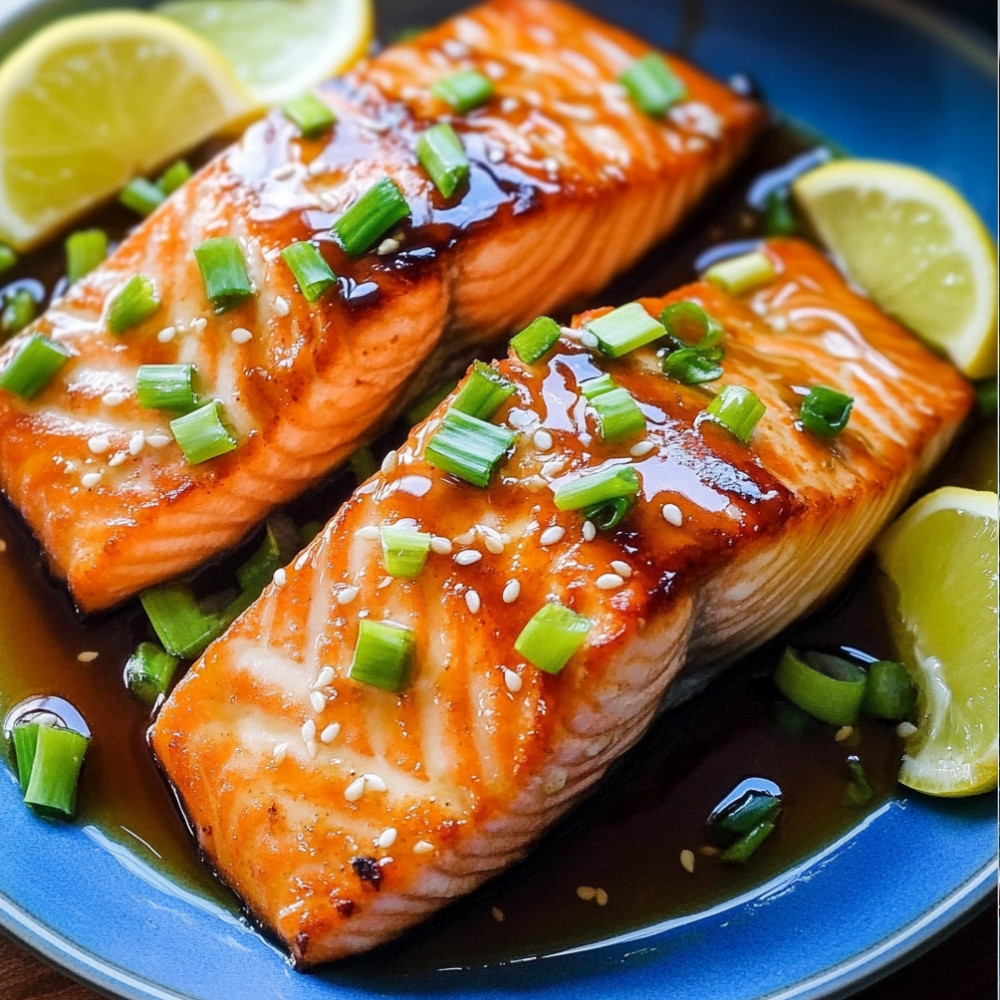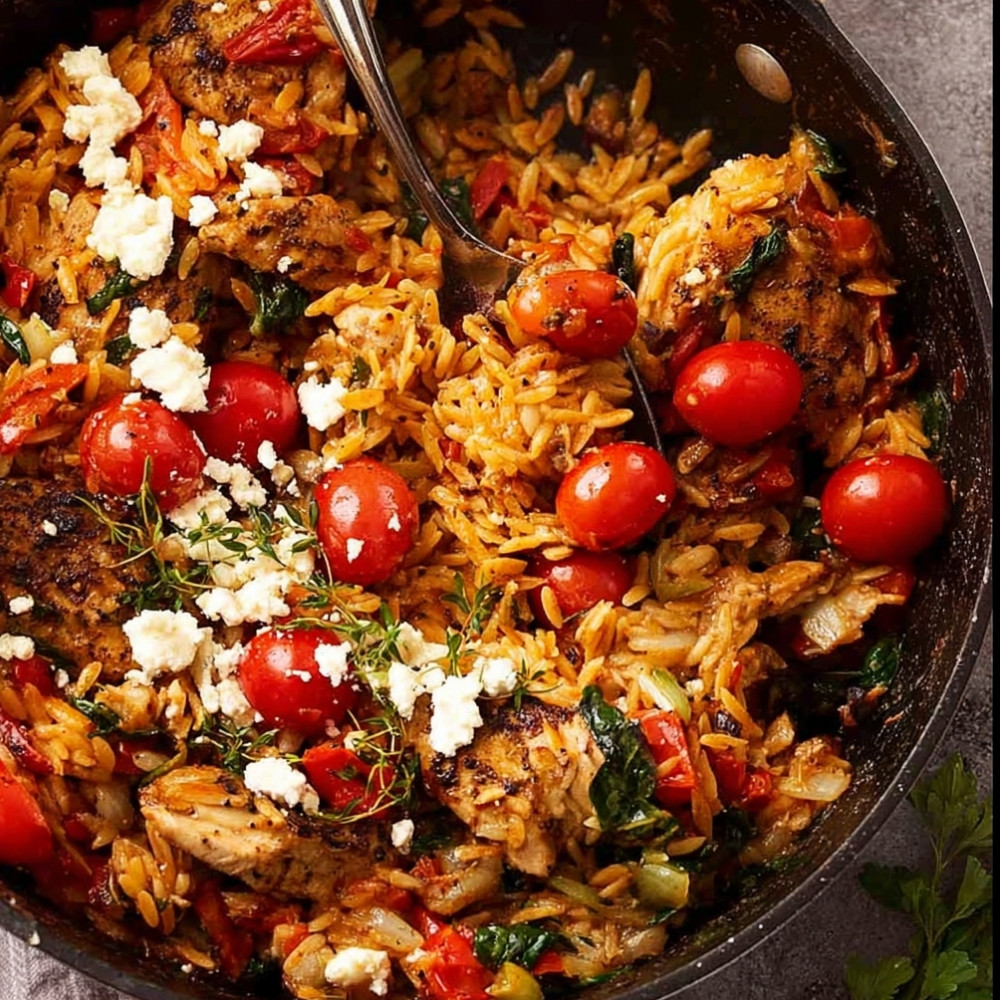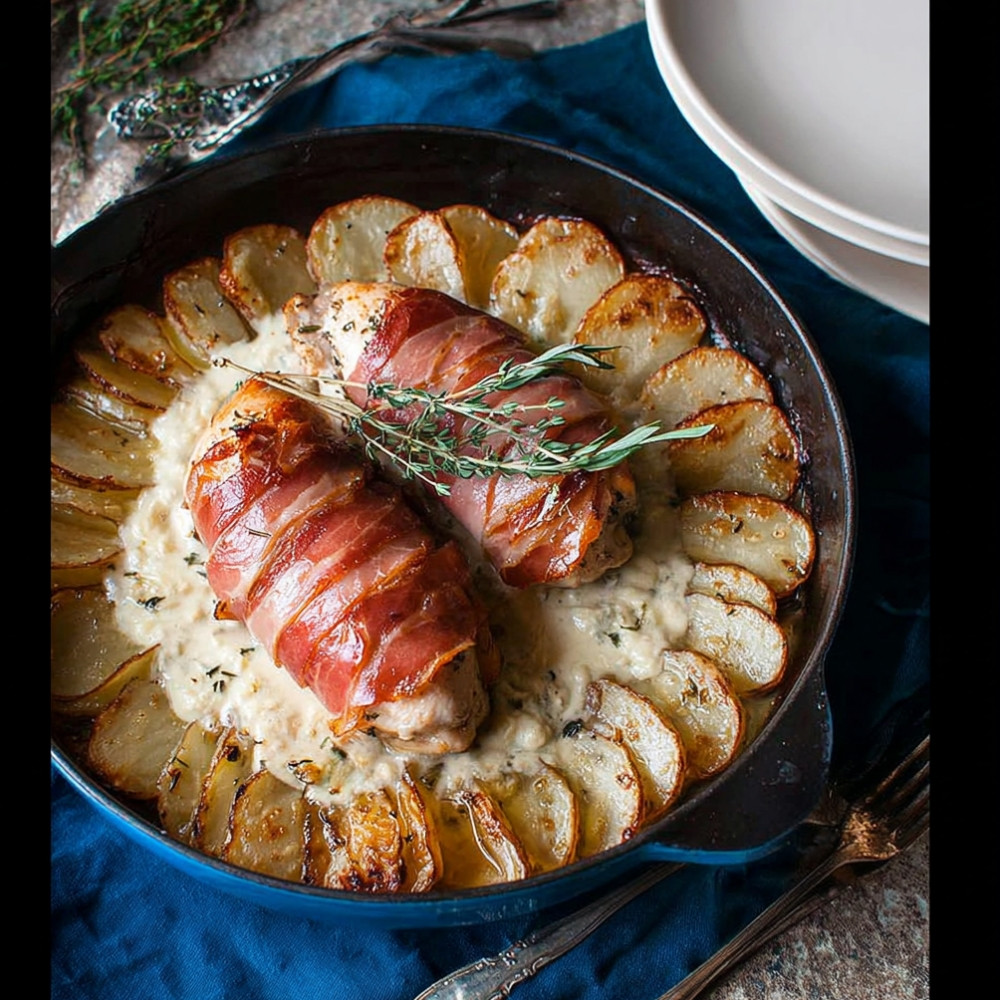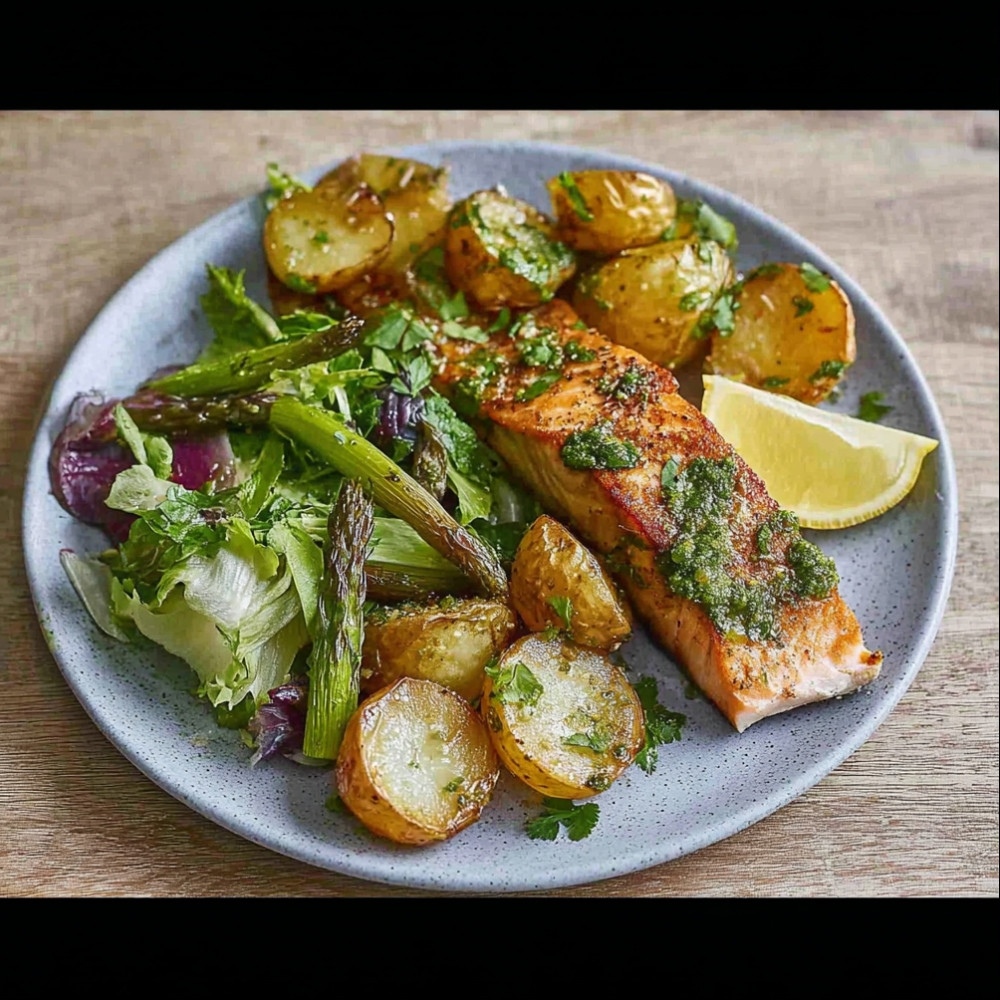Introduction
Honey-glazed salmon is a delicious and easy-to-make dish that combines the rich flavors of salmon with the sweetness of honey and a hint of soy sauce. This recipe is perfect for busy weeknight dinners or special occasions. With its vibrant colors and mouthwatering aroma, honey-glazed salmon not only tastes great but also presents beautifully on the plate.
Detailed Ingredients with Measures
Salmon fillets: 4 pieces (approximately 6 ounces each)
Honey: 1/4 cup
Soy sauce: 3 tablespoons
Garlic: 2 cloves, minced
Lemon juice: 1 tablespoon
Olive oil: 1 tablespoon
Salt and pepper: to taste
Chopped green onions: for garnish
Prep Time
15 minutes
Cook Time, Total Time, Yield
Cook Time: 10 minutes
Total Time: 25 minutes
Yield: Serves 4
Detailed Directions and Instructions
Prepare the Marinade
In a bowl, whisk together honey, soy sauce, garlic, and black pepper until well combined. This mixture will serve as your marinade, adding flavor to the salmon.
Marinate the Salmon
Place the salmon fillets in a shallow dish or a zip-top bag. Pour the marinade over the salmon, ensuring each piece is well-coated. Cover the dish or seal the bag, and refrigerate for at least 30 minutes, allowing the flavors to infuse.
Preheat the Oven
Preheat your oven to 400°F (200°C), ensuring that it is hot enough to cook the salmon evenly.
Prepare the Baking Sheet
Line a baking sheet with aluminum foil for easy cleanup. You may also lightly grease the foil with cooking spray or a drizzle of oil to prevent the salmon from sticking.
Place the Salmon on the Baking Sheet
Remove the salmon from the marinade, allowing the excess to drip off, and arrange the fillets on the prepared baking sheet with the skin side down.
Bake the Salmon
Transfer the baking sheet to the preheated oven and bake for 12 to 15 minutes, or until the salmon flakes easily with a fork and is cooked to your desired level of doneness.
Broil for a Glaze
For an added caramelized glaze, switch to the broiler setting for the last 2-3 minutes of cooking. Keep a close eye on the salmon to prevent burning.
Serve the Salmon
Remove the salmon from the oven and let it rest for a few minutes. Serve the salmon fresh, drizzled with any remaining marinade from the baking sheet if desired.
Notes
Choosing the Salmon
Wild-caught salmon is generally preferred for its flavor and texture, but farmed salmon can also be used.
Adjusting the Marinade
Feel free to adjust the amounts of honey or soy sauce according to your taste preferences.
Cooking Variations
This recipe can also be grilled or pan-seared if you prefer those cooking methods. Adjust cooking times as necessary.
Storing Leftovers
Leftover salmon can be stored in an airtight container in the refrigerator for up to 3 days. Reheat gently in the oven or microwave.
Serving Suggestions
Serve the honey-glazed salmon with rice, quinoa, or steamed vegetables for a complete meal.
Cook techniques
Grilling
Grilling salmon enhances its flavor and creates a delicious char. Ensure the grill is preheated, and use a light oil to prevent sticking.
Baking
Baking is a gentle cooking method that retains moisture. Use a foil packet or baking dish to make clean-up easier while allowing the salmon to steam in its own juices.
Pan-searing
Pan-searing salmon provides a crispy exterior while keeping the inside tender. Use a hot skillet and add oil before placing the salmon to achieve a perfect sear.
Broiling
Broiling is an excellent way to cook salmon quickly. This method uses high heat from above to cook the fish evenly and gives it a nice glaze when finished.
Marinating
Marinating salmon before cooking adds layers of flavor. Use a mixture of honey, soy sauce, and garlic to infuse the fish before applying heat.
FAQ
How long should I cook salmon?
Salmon typically requires 4 to 6 minutes per half-inch of thickness, but cooking time may vary based on the method and desired doneness.
What temperature should salmon be cooked to?
Salmon is best cooked to an internal temperature of 145°F (63°C), ensuring it is fully cooked yet still moist.
Can you glaze salmon with other ingredients?
Yes, you can experiment with different glazes such as teriyaki sauce, garlic butter, or citrus marinades to vary the flavor profile.
What side dishes pair well with honey-glazed salmon?
Honey-glazed salmon pairs wonderfully with steamed vegetables, rice, or a fresh salad to balance the sweetness.
How do I prevent salmon from sticking when cooking?
To prevent sticking, make sure to oil the cooking surface and let the salmon sit at room temperature for about 15 minutes before cooking.
Conclusion
The honey-glazed salmon is a delightful dish that marries the sweetness of honey with the rich flavor of salmon. This recipe is not only simple to prepare but also offers a healthy way to enjoy a delicious meal. The glaze caramelizes beautifully, giving the salmon a rich, golden color and enhancing its taste. Whether you’re serving it for a family dinner or a special occasion, this dish is sure to impress.
More recipes suggestions and combination
Quinoa Salad with Roasted Vegetables
Pair your honey-glazed salmon with a refreshing quinoa salad loaded with roasted vegetables. The nutty flavor of quinoa complements the sweetness of the glaze while adding a nutritious element to your meal.
Garlic Mashed Potatoes
Serve the salmon alongside creamy garlic mashed potatoes. The buttery and garlicky flavors of the potatoes make for a comforting and satisfying side dish that balances the sweetness of the honey glaze.
Steamed Asparagus with Lemon
For a lighter side, consider steamed asparagus drizzled with lemon juice. The freshness of the asparagus and citrus adds a vibrant touch to the meal and pairs well with the savory notes of the salmon.
Brown Rice Stir-Fry
A brown rice stir-fry with colorful vegetables can be a perfect complement. The earthy flavor of the brown rice harmonizes with the sweet and savory elements of the salmon, making for a wholesome combination.
Mango Salsa
For a tropical twist, serve your honey-glazed salmon with a fresh mango salsa. The sweetness of the mango adds an exotic flair and enhances the overall flavor profile of the dish.




Leave a Reply